Bone broth is magical! Not only does it taste great, but also it’s beneficial for joint health, digestive health, and more. So don’t throw out those bones! Learn more about making bone broth soup…
About twenty years ago, I made a pleasant discovery. I noticed that if my husband, Bob, and I have at least two servings of my homemade bone broth soup a week, we have no problems with our joints. When we don’t have the bone broth, our joints get quite stiff and bothersome.
What Is Bone Broth?
Bone broth is the protein-rich liquid that results from simmering bones in water for a long time. Don’t throw this water away!
It’s not just about being thrifty. Our ancestors knew this was a source of healing nutrients in an easy-to-digest form that also tastes great.
Think of it this way: Vitamins and minerals are water-soluble. This is one reason that we lose a lot of vital nutrients when we boil our vegetables and meats and throw the water away.
Soup, on the other hand, collects these items and serves them up to us in an easily digestible way. Nutrients are the building blocks of our cells; they give us the ability to renew and heal all of the parts of our bodies.
Health Benefits of Bone Broth
Bone broth is not the same as stock, though it’s similar in use. Essentially, you could think of bone broth as a more nutritious alternative—a magical elixir! By simmering the bones for a long time, you extract the healthy goodness (collagen, amino acids, minerals).
While ready-made stock (cubes, bouillon powder) has its purpose, it’s not usually made from actual bones anymore and can also include a concoction of hydrolyzed protein and emulsifiers. Plus, stock is not as rich and flavorful!
There are numerous health benefits of bone broth. Here are just a few of the more known ones:
- Supports healing, repair, and energy levels. Bone broth is associated with collagen. When you boil bone broth, the collagen breaks down into gelatine and various other health-promoting amino acids, which help with your body’s healing, repairing tired muscles, and reviving energy levels.
- Aides digestion and gut health! Gelatine is the most abundant protein in bone broth. It binds with water to support the healthy transit of food through the intestines.
- Relieves joint stiffness: Studies show collagen improves pain, stiffness, and joint function in patients with osteoarthritis.
- Strengths hair, nails, and skin. Bone broth is packed with protein, good fats, collagen, and keratin. This helps with flaky nails, split ends, dry skin, and even wrinkles. Collagen has also proved successful as a weight loss aid.
How to Use Bone Broth
Use bone broth as you would stock—for soups, sauces, soups, stews, and risotto.
Aside from cooking with bone broth, we enjoy a mug of seasoned bone broth on its own. It’s a great way to start the day, especially when it’s chilly, or it’s a great low-calorie snack in mid-afternoon.
Bone Broth Ingredients and Supplies
- All you need are the leftover animal bones. Poultry, pork, lamb, and goat bones are all fine. Joint bones are especially great for bone broth because they are rich in cartilage. Meaty bones, such as ribs, or bones with marrow, are also good for making bone broth.
- You can cook bone broth in a pot on the stove, in a slow cooker, or even in the oven. Do not use non-stick pans or plastic spoons as they can leach out lead and other toxins during the long cooking process.
- You may add vegetables such as onions or root vegetables. Do not add brassica vegetables like broccoli ends and cauliflower leaves to your broth—the long cooking time on these veggies will ruin the flavor of your broth.
I cook my soup on low for 36 to 48 hours. The longer we cook it, the more gelatin and other contents (collagen, amino acids, minerals) get into it. By the end of this amount of time, the soup is very dark and rich. If you only cook for a few hours, the broth will taste like water.
Bone Broth Soup Recipe
So, I make soup a lot. Here’s my process:
Using beef, chicken, turkey, or lamb (or a combination), put the bones in a crock pot.
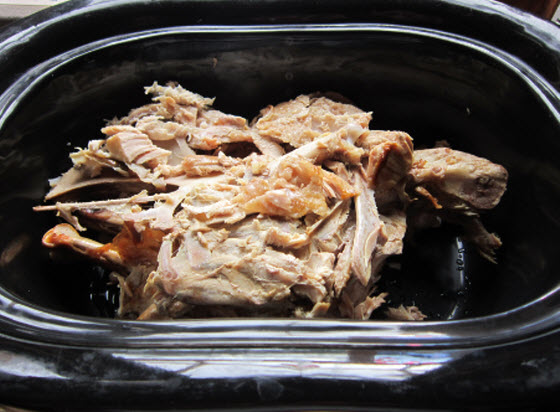
Add water to cover bones by 1 inch and add whatever vegetables that I have at hand—often beets, carrots, and yellow onions. Because it contains so many vitamins and minerals, I personally always add a small piece of liver to the pot. I then add a dash of white wine or vinegar. This helps to get the gelatin from the bones into the soup. If I have any pan drippings from cooking the meat, I will also put that in. Then, I fill the pot with cold water and turn it on to simmer.


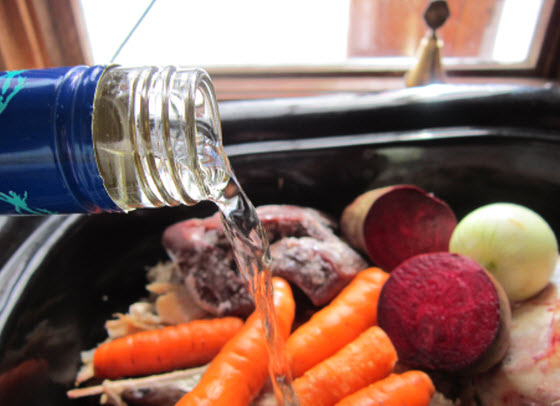
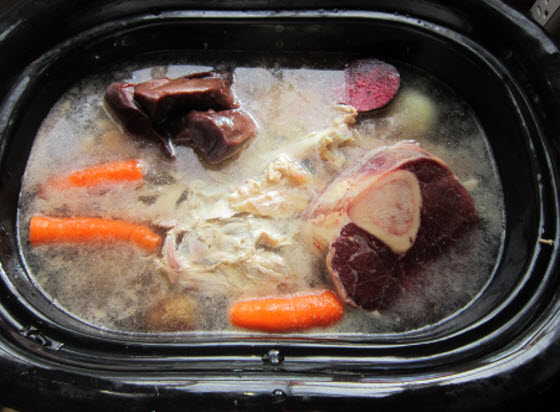
Bring to a low boil, skimming any scum that rises to the surface, then lower the heat so the liquid is gently simmering.
I simmer my soup on low for 48 hours. If you’re going to get the most nutritional value, you might as well cook longer. By the end, the broth, is rich, thick, and deep in color.
Now, it’s time to strain the juice from the rest. Using pot holders, I pour the mixture into a colander, which is set in a large bowl. Once the crock is empty, I generally set the colander into a smaller bowl to let the soup begin to cool down. A few teaspoons of salt can be added at this time.
Once the soup is cooled down, skim off any fat that has risen to the surface. Then spoon the soup through a fine-mesh sieve and transfer into several can or freeze pints, cover, label with the date and set them into the freezer. Frozen broth will keep for up to 6 months.
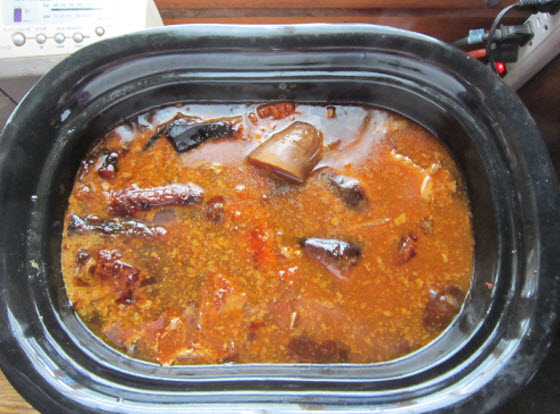
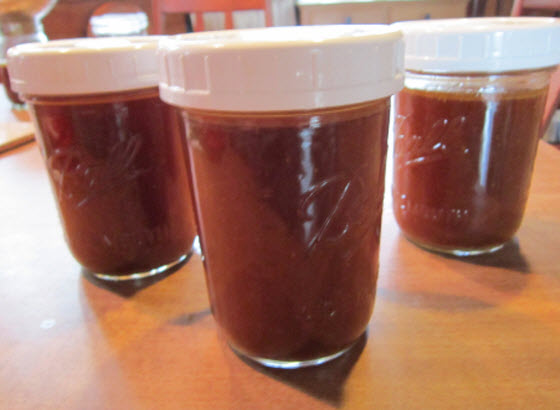
We often heat up a pint, pour it into two mugs, and drink. In a pinch, I set the pint in a pan of hot water to defrost more quickly. However, this soup can also be made into a sauce by boiling, adding a mixture of arrowroot and water, and boiling again.
My knees love me for it!
















